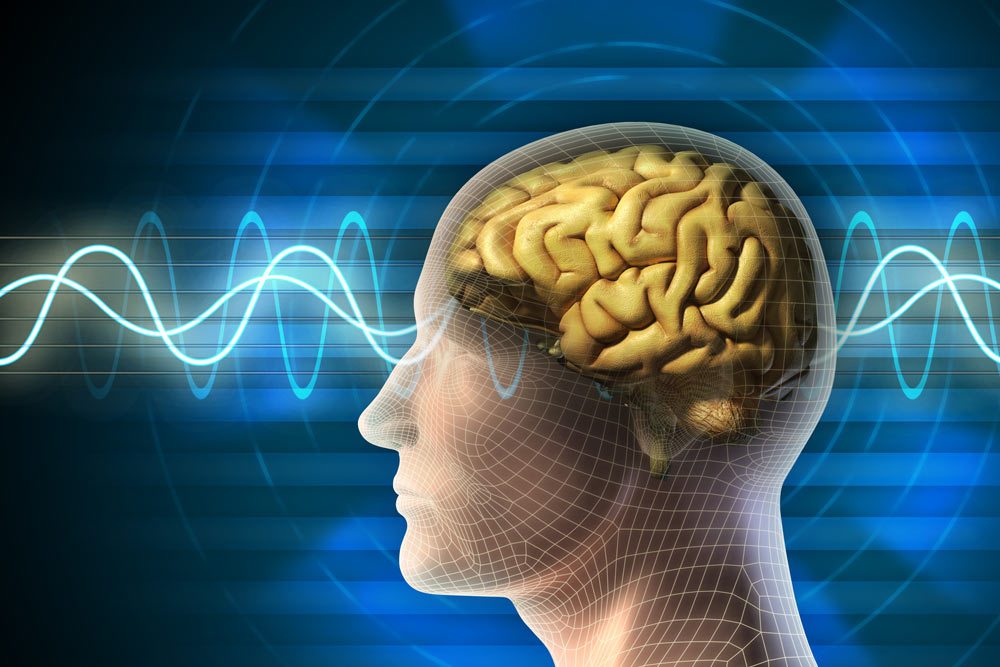

The phrase, “brainwave entrainment” might not be so familiar to you, but it’s something that is becoming more and more mainstream as emerging studies suggest its usefulness for learning, inducing sleep and even relaxation.
A study published in “Alternative Therapies in Health and Medicine” back in 2008 found that brainwave entrainment reduced pain in some subjects post-surgery and lessened anxiety in others when used as a therapy While the authors in that study found that more research was needed, they also concluded brainwave entrainment was a potential therapy tool, and the practice has spread even more since then.
Brainwave entrainment is a method used to stimulate your brain into entering a specific state by light, an electromagnetic field or pulsing sound. The pulses are designed to trigger your brain’s “frequency following” response, so your brainwaves are encouraged to match themselves to the frequency of the supplied beat. An example of frequency following you may be familiar with is the unfortunate response of a person with epilepsy to a strobe light. When a strobe light flashes at a person’s seizure frequency, his or her brain will try to align to the flashing strobe, resulting in a seizure.
But just as there can be a negative response in those with epilepsy, many people also respond to this method in positive ways, as it can be used to induce different mind states such as trance, sleep and even enhanced focus for studying. Read on to learn more about improving your studying success using brainwave entrainment.
Brainwave Types: A Brief Overview
There are five major brainwave types, as follows:
• Gamma waves: These occur between 40 Hz and 100 Hz and are thought to be important for learning, remembering and the processing of information. Too much can cause anxiety, and too little can interfere with your learning and mood.
• Beta waves: Common in your waking state, Beta waves are in the12 Hz to 40 Hz range and keep you stimulated, impacting focus. An overabundance of Beta waves can result in the inability to relax or anxiety, while not enough induce daydreaming and poor cognition.
• Alpha waves: Right in between Gamma and Beta at a range of 8 Hz to 12 Hz, Alpha waves bridge the gap between your subconscious and conscious mind. You may struggle to focus with too much and experience insomnia and anxiety with too little.
• Theta waves: At 4 Hz to 8 Hz, Theta waves are involved in your sleep and daydream cycles and foster creativity. Too much can cause behaviors like hyperactivity, while not enough can bring stress.
• Delta waves: Seen at 0 Hz to 4 Hz, Delta waves are more commonly observed in children and most associated with deep, healing sleep. A large amount of Delta waves may interfere with thinking, and an inadequate amount can reduce sleep quality.
While all your brainwaves are important and handle necessary functions for your life quality, three stand out when it comes to studying: Gamma, Alpha and Theta. Studies are a bit mixed when it comes to which brainwave is best for you when you’re studying, so the best approach is to focus on the one most suited for the type of studying you’re doing.
Theta For All Your Facts
Theta waves are below Alpha, creating an even bigger connection between your conscious and subconscious minds. The bridge between the two allows you to process information on two levels at the same time. This is why Theta is considered a great state for creativity, your intuition and your problem solving skills. If you need to memorize dry facts, Theta may be your best bet because in that state, you’re more receptive to receiving and keeping straightforward information.
Alpha For Something New
Alpha waves are often thought of as the best waves for learning, since your mind and body are relaxed but still open to keeping a level of focus. Like Theta, both your conscious and unconscious minds are taking in and processing the information, but at a slower rate. Since entirely new information warrants slower processing for you to gain a better understanding, use Alpha waves when you’re studying entirely new information that you have to truly understand rather than just memorize.
Gamma For Your Brain Overall
Gamma waves are linked to better memory, increased brain function and even higher IQ levels. A 2008 study out of Rutgers University found that young children with higher Gamma wave levels had better cognitive and language skills than those children who had less Gamma activity (http://www.sciencedaily.com/releases/2008/10/081021120945.htm). While Gamma isn’t particularly suited to one type of studying, using Gamma brainwave entrainment on a semi-regular basis may help you improve how you learn overall.
Brainwave Entrainment Types: Quick Guide
Before you start using brainwave entrainment for studying, you’ll need to consider the different methods available, from beats to lights:
• Monaural beats: A single pulsing beat, monaural audio brainwave entrainment might sound like pulses or “clicks” and is listened to without headphones. These are considered more effective than binaural beats, but are more noticeable in music.
• Binaural beats: With binaural beats, you’ll have pulses at two different frequencies in each ear, stimulating your brainwaves to go toward the difference between both frequencies. While not considered as effective as monaural beats, you can use headphones, and the listening experience is usually better.
• Isochronic beats: These are used in combination with monaural and binaural beats and are usually embedded into a tone that is present throughout the overall music, making for a smoother listening experience.
• Music: In music, the brainwave entrainment beats are embedded into the song itself to improve the listening experience.
• Lights and Sound Combined: Sound and Light brainwave entrainment uses all or a combination of the audio methods above plus lights that flash with the music. Light delivery is usually through glasses that have tiny lights or flashes on a computer screen. More advanced methods include light and sound experiences during which your brainwaves are monitored so the program adjusts accordingly. While very effective, this method can also be very intense for users. Consider starting with just an audio method if you’re new to brainwave entrainment.
You’ll need to decide which method is the most comfortable for you, which is often determined by trial and error. Remember to switch the brainwave target types based on what you’re studying for better results!
Brainwave entrainment is largely considered safe, but you may experience some temporary side effects, such as feeling a little spaced out, fatigued, or some emotional changes, with the latter being the most rare of the three. Changing between different methods and product types or being new to brainwave entrainment are the two most likely times you’ll experience some side effects. Ease yourself into the process slowly, and be ready to adjust what you’re doing as needed for your personal comfort and the overall best experience.

